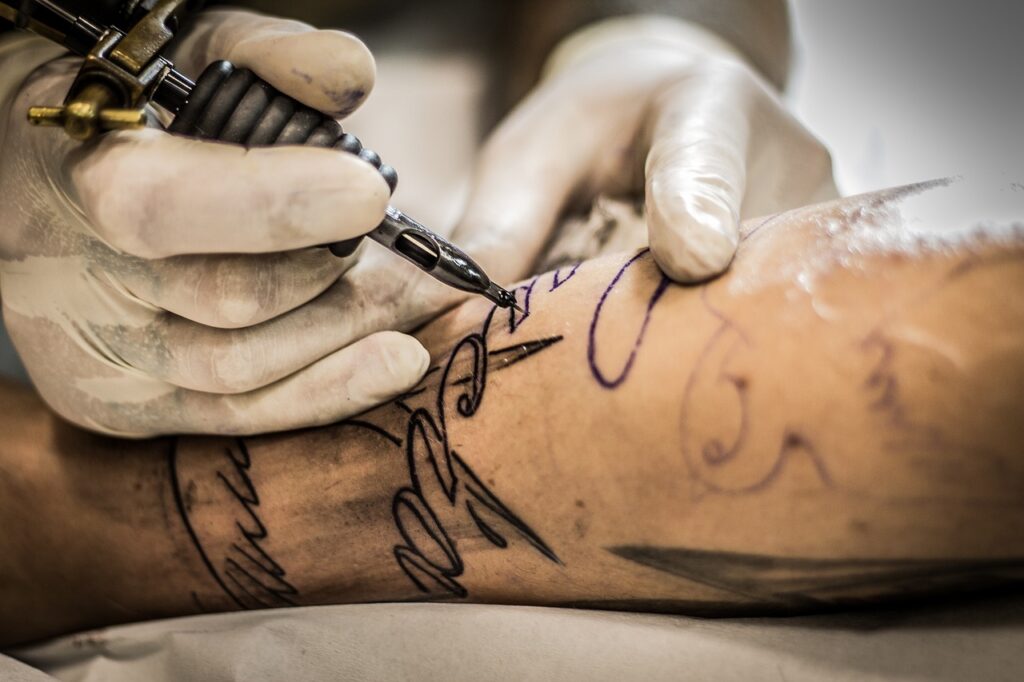Tattoos have always been a symbol of self-expression. A timeless medium for people to convey their beliefs, feelings, and personality, tattoos have stood strong transcending time and cultures. As we delve deeper into the world of tattoos, we find that there is more to it than just ink on skin – it’s a way of life!
From the earliest civilizations to the present day, tattoos have been an integral part of human culture. Ancient Egyptians marked their bodies with symbols of protection and strength, while the Polynesians inked their skin with intricate designs that represented their social status and heritage. Fast forward to today, and tattoos continue to be a popular form of self-expression, with millions of people around the world proudly displaying their body art.
In this fascinating journey, we’ll explore the rich history, cultural significance, and diverse styles of tattoos, along with the creative process behind designing and inking a tattoo. So let your skin be the canvas, and let’s dive into the captivating world of body art!
The Rich History of Tattoos
Tattoos have a long and storied history dating back to thousands of years. The oldest known example of tattooed human skin is that of Ötzi, the Iceman, who lived around 3300 BCE. His body bore over 60 tattoos comprising simple dots and lines, which scientists believe were used as a form of pain relief therapy.
Over time, tattoos were adopted by various civilizations for different purposes. The ancient Egyptians used tattoos for religious and medicinal reasons, while the Celts inked their bodies with symbols of war and bravery. In Japan, tattoos were initially a form of punishment for criminals, but later evolved into a sophisticated art form practiced by the Yakuza.
Throughout history, tattoos have been a powerful medium for people to express their individuality, commemorate significant life events, and pay homage to their cultural heritage. Today, the art of tattooing continues to evolve, with new styles and techniques being developed by talented artists worldwide.
The Cultural Significance of Tattoos
In many cultures, tattoos hold deep significance and convey important messages. In Polynesian culture, for instance, tattoos are a symbol of social status, courage, and spiritual rites. The Maori people of New Zealand are renowned for their facial tattoos called “moko,” which represent their lineage and ancestry.
Similarly, in Native American culture, tattoos have been used to symbolize a person’s relationship with their tribe, as well as their spiritual beliefs and connection with nature. In modern Western society, tattoos often signify personal beliefs, life experiences, and artistic expression.
The Different Styles of Tattoos
As diverse as the cultures and people who wear them, tattoos come in a wide variety of styles. Here are some popular tattoo styles, each with its unique history and aesthetics:
1. Traditional: Also known as “Old School” or “American Traditional,” these tattoos feature bold lines and vibrant colors. Popularized by the legendary tattoo artist Sailor Jerry, traditional tattoos often depict nautical themes, pin-up girls, and classic Americana symbols like eagles and roses.
2. Realism: As the name suggests, realism tattoos aim to replicate real-life images with exceptional detail and precision. These tattoos often feature portraits, animals, and nature scenes, showcasing the artist’s skill in capturing lifelike textures and shading.
3. Tribal: With roots in indigenous cultures, tribal tattoos use bold, black lines to create abstract patterns and shapes. Often inspired by ancient tribal designs, these tattoos can be simple or incredibly intricate.
4. Japanese: Japanese tattoos, or “Irezumi,” are characterized by their large, intricate designs, often covering large areas of the body. These tattoos typically feature mythological creatures, flowers, and scenes inspired by traditional Japanese art.
5. Watercolor: A relatively new style, watercolor tattoos mimic the look of watercolor paintings, with soft, blending colors and a painterly feel. These tattoos are perfect for those who want a more delicate, artistic look.
The Art of Tattooing
The process of getting a tattoo involves much more than just inking the skin. It begins with a consultation between the artist and the client, where they discuss the design, size, and placement of the tattoo. Once a design is finalized, the artist creates a stencil, which is then transferred onto the skin.
Tattooing requires a steady hand, precision, and an eye for detail, as the artist uses a tattoo machine to insert ink into the skin’s dermis layer. The process can take anywhere from a few minutes to several hours, depending on the complexity and size of the design. Throughout the process, the artist ensures that proper hygiene and safety measures are maintained to prevent infections and complications.
The Journey Continues
With an ever-growing community of passionate artists and enthusiasts, the world of tattoos continues to reach new heights. Tattoos have come a long way from being mere markings on ancient human skin to evolving into a sophisticated, multifaceted art form that has captivated millions across the globe.
Whether you’re a seasoned tattoo collector or a curious admirer, there’s no denying the allure and personal significance of body art. As you embark on your tattoo journey, remember that it’s not just about the ink – it’s about embracing your unique style and expressing what truly matters to you. So, go ahead, dare to express yourself, and leave your mark on the world!
